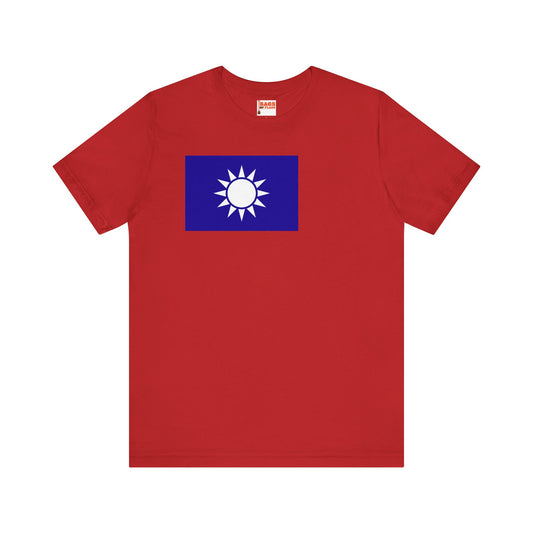-
Taiwan Sweatshirt
Regular price $34.15 USDRegular priceUnit price / per -
Taiwan Inspired Sweatshirt
Regular price $34.15 USDRegular priceUnit price / per -
Taiwan Flag Sweatshirt
Regular price $34.15 USDRegular priceUnit price / per -
Taiwan Pillow
Regular price $22.65 USDRegular priceUnit price / per -
Taiwan Backpack
Regular price $59.79 USDRegular priceUnit price / per -
Taiwan Leather Patch Hat
Regular price $18.85 USDRegular priceUnit price / per -
Taiwan Mug
Regular price $11.65 USDRegular priceUnit price / per -
Taiwan Trucker Cap
Regular price $14.90 USDRegular priceUnit price / per -
Taiwan Inspired Hoodie
Regular price $34.40 USDRegular priceUnit price / per -
Taiwan Hoodies
Regular price $34.40 USDRegular priceUnit price / per -
Taiwan T-shirts
Regular price $22.79 USDRegular priceUnit price / per -
Taiwan Flag Hoodies
Regular price $34.40 USDRegular priceUnit price / per -
Taiwan Inspired T-shirt
Regular price $22.79 USDRegular priceUnit price / per -
Taiwan Flag on T-shirt
Regular price $22.79 USDRegular priceUnit price / per
Collection: Taiwan
The Taiwan flag symbolizes pride and identity for the people of Taiwan. This red and blue flag, with a white sun in the middle, holds deep historical significance and symbolism. We will delve into the lesser-known facts and anecdotes surrounding the Taiwan flag, shedding light on its design, historical context, symbolism, current relevance, and additional protocols.
Overview of the Taiwan Flag's Design and Colors

The flag of Taiwan showcases a vibrant red field, symbolizing the courage and sacrifice in the quest for freedom. Anchored in the canton (the upper hoist-side quarter) is a deep blue rectangle, representing the limitless sky and vast sea encompassing the island. Centered within this blue sanctuary, a stark white sun radiates with twelve extended rays. Each ray stands for a month of the year and a traditional Chinese hour, portraying the fullness of time and the universality of the Taiwanese spirit.
The juxtaposition of red and blue, coupled with the purity of the white sun, encapsulates the core values and aspirations of the Taiwanese people. The harmonious blend of these colors signifies not only the rich cultural heritage and democratic ideals of Taiwan but also the nation's relentless pursuit of progress and unity. This symbolic design thus serves as a vivid reminder of Taiwan's tumultuous history and its enduring quest for identity and sovereignty.
Historical Context Surrounding the Taiwan Flag
Adopted on October 28, 1928, the flag of Taiwan, originally the flag of the Republic of China, holds a significant place in the island's history. Its adoption marked a pivotal moment, symbolizing the people's aspirations for independence and self-governance amidst a tumultuous period. The flag's history is deeply intertwined with the Chinese Civil War, where it emerged as a symbol of resistance against the communist forces.
Following the Kuomintang (KMT) retreat to Taiwan in 1949, after losing to the communists in mainland China, the flag began its new chapter as the emblem of Taiwan. Over the years, the flag has witnessed and stood for the island's evolving political landscape, economic development, and the pursuit of a distinct identity on the international stage. Despite the changes in governance and the challenges faced by external pressures, particularly from the People’s Republic of China, the flag's original design has remained unchanged. It stands as a testament to Taiwan's resilience and its unwavering commitment to the values it embodies.
Symbolism Embedded in the Taiwan Flag
At the heart of the Taiwan flag lies a wealth of symbolism, each element carefully chosen to embody the profound ideals and aspirations of the Taiwanese people. Central to this emblematic design is the white sun, which shines brightly against a blue sky, serving as a beacon of hope and guiding light toward democracy, freedom, and equality. With its twelve extended rays, this luminary does more than mark the passage of time—it unifies the nation under the ethos of progress and unity, illuminating the path forward.
The choice of colors further enriches the flag's narrative. Red, a dominant backdrop, is not just a bold assertion of courage and the willingness to make sacrifices; it is a reminder of the bloodshed and the struggles endured in the quest for liberty and self-determination. Blue represents peace, vastness, and the sky above, symbolizing the nation's vision for harmony and its place within the global community. Together, these colors do not merely paint a picture of the past; they weave a vision of a future filled with hope, resilience, and an unbreakable spirit.
Each element of the Taiwan flag, from the sun to the colors chosen, is a testament to the enduring values that guide the Taiwanese people. Through its symbolism, the flag narrates a story of continuous striving for democracy, peace, and progress, inviting all who behold it to reflect on the deeper meanings woven into its fabric.
Current Relevance of the Taiwan Flag
Today, the Taiwan flag is a vibrant emblem on numerous significant occasions, exemplifying its essential role in the Taiwanese people's collective identity and national pride. It is notably present during official ceremonies, public holidays, and educational institutions, symbolizing unity and the nation's shared values. However, its presence extends beyond mere national pride. Internationally, the flag finds itself at the center of geopolitical tensions, particularly with the People’s Republic of China, which disputes Taiwan's sovereignty.
This contention occasionally leads to diplomatic friction, as seen in international sporting events and global forums, where the flag's display can become a point of contention. Despite these challenges, the flag's prominence in Taiwan continues unabated, reinforcing the island's determination to uphold its identity and sovereignty. Its enduring visibility underscores the cultural significance and the ongoing struggle for international recognition and respect within the global community.
Additional Facts and Protocols Related to the Taiwan Flag
Respecting the Taiwan flag involves a set of guidelines designed to honor its significance. The flag must never be upside down, symbolically indicating distress or dire situations. During ceremonies of raising or lowering the flag, participants are expected to exhibit respect and solemnity, reflecting the flag's importance in representing the nation's identity and values. One of the unique aspects of the Taiwan flag is its design simplicity; unlike many national flags, it is devoid of any inscriptions or text, allowing its symbolic colors and imagery to speak volumes.
When displayed alongside other countries' flags, the Taiwan flag must be positioned equally, ensuring it is never overshadowed, to maintain respect for the nation's sovereignty and pride. These protocols not only preserve the flag's dignity but also foster a deeper appreciation for the ideals it embodies.




























